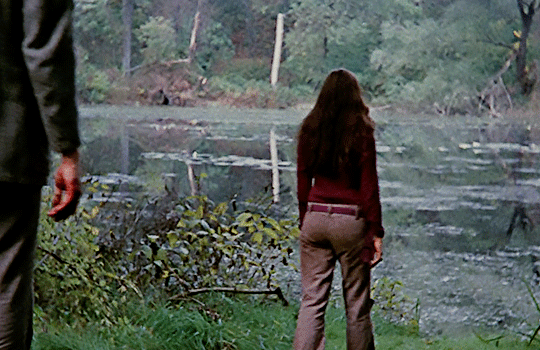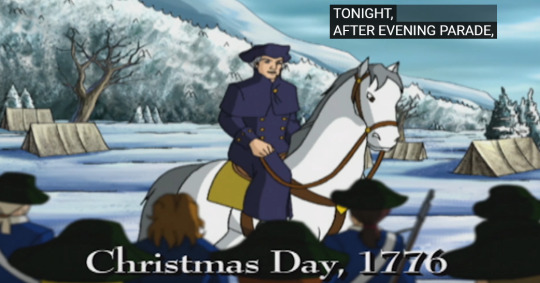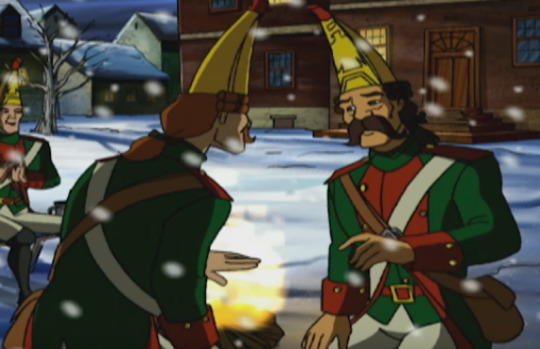#Hesse-cassel
Text

Hesse-Cassel artillerists during the American Revolution. While Hesse-Cassel didn't provide a dedicated artillery detachment to its American contingent (unlike Hesse-Hanau), it did assign two guns to each infantry battalion.
#history#military history#18th century#american revolution#american war of independence#revwar#hessian#hessians#hesse-cassel#hesse-kassel
71 notes
·
View notes
Text
La Dernière Maison sur la gauche, 1972

Pour fêter son dix-septième anniversaire, Mari, accompagnée d'une amie, décide de se procurer de la marijuana. Lorsqu'un jeune marginal, Junior, se propose de leur en procurer, elles acceptent, ne se doutant pas que le dealer fait partie d'une bande de sadiques meurtriers emmenés par le terrifiant Krug. Leur calvaire va bientôt commencer.




Un film CULTE, tout comme Massacre à la tronçonneuse, l’atmosphère et l'ambiance y sont identiques pour moi, c'est glauque, malsain, filmé avec une image sale, on y sens réellement la souffrance des personnages, et ce qui est intéressant avec ce film est le retournement de situation à mi film ou les chasseurs deviennent les proies.


The Last House on the Left (1972) ORIGINAL TRAILER
youtube
#horror movies#movies#movie#film#cinema#La Dernière Maison sur la gauche#horreur#horror#70s#1972#The Last House on the Left#Wes Craven#Sandra Cassel#Lucy Grantham#David Hess#Fred J. Lincoln#Jeramie Rain#usa#cinephile#Youtube#American movie
2 notes
·
View notes
Photo

During his Majesty's brief sojourn at Friedrichshof he and the German Emperor were the guests of Princess Frederick Charles of Hesse-Cassel, the youngest daughter of the late Empress Frederick. Her Royal Highness, who is the Kaiser's favourite sister, is a gentle, sweet-looking woman, who lives up to the Hohenzollern ideal by being the mother of six sturdy sons, who include two sets of twins. Princess Margaret of Prussia, as she was, of course, always called as a girl, played in her mother's life much the same part as Princess Beatrice played in that of our late Sovereign. It was said that on several occasions, she refused brilliant offers of marriage rather than leave her widowed mother, and her betrothal to the Prince whose wife she now is was the outcome of quite a romance. Prince Frederick Charles is a clever studious officer; he is trebly connected with our Royal Family, for in addition to being King Edward's nephew by marriage, he first-cousin to Queen Alexandra and to the Duchess of Connaught. The Empress Frederick left her youngest daughter the beautiful palace created by herself, and accordingly Prince and Princess Frederick Charles spend the greater portion of each year at Friedrichshof, though they also own a delightful suite of rooms in the famous Schloss Rupenheim.
The Sketch Aug 22, 1906
#Princess Margaret of Prussia#1900s#prussian royal family#Kaiser Wilhelm II#Prince Friedrich Charles of Hesse-Cassel#magazine article
15 notes
·
View notes
Text
Only bad thing about my old aph OC obsession resurfacing is that I cannot drag the non-aph OCs with me. At least not a lot of them into the 30 Years War. However, I did have one somewhat colourblind AU set in the years leading up to it...
#somewhat because Massoud was tied to the region of modern day Afghanistan#Hugo however who is swiss with a Morroccan background who I could also have fit into it preserving his origins like that...#he just was a Protestant Prince bc I wanted Lego with the Protestant/Catholic divide#also the CITY KIDS WERE IN IT AS DELEGATES FROM THEIR RESPECTIVE REALMS#technically Abel (aph Hesse) was in it as the Hessen-Cassel delegate and Schafi was there as his daughter#and she brought Lena (Rotenburg an der Fulda) with her as a friend buuuut that still meant all the kids were there#Moritz for Fulda and Simon for the city of Hersfeld were favourites. I love them so goddamn much
3 notes
·
View notes
Text

The Last House on the Left (1972)
3 notes
·
View notes
Text

Now showing on DuranDuranTulsa's Horror Show...The Last House On The Left (1972) on classic DVD 📀! #movie #movies #horror #LastHouseOnTheLeft #wescraven #RIPWesCraven #sandracassel #davidhess #lucygrantham #fredjlincoln #marcsheffler #JeramieRain #gaylordstjames #dvd #70s #durandurantulsa #durandurantulsashorrorshow
#movies#movie#horror#last house on the left#wes craven#rip wes craven#sandra cassel#lucy grantham#david hess#Gaylord St James#fred j lincoln#marc scheffler#jeramie rain#70s#dvd#duran duran tulsa's horror show#duran duran tulsa
0 notes
Text

Oil Painting, ca. 1791, German.
By Wilhelm Böttner.
Portraying Wilhelm IX of Hesse-Cassel with his family.
Royal Collection Trust.
#royal collection trust#chemise à la reine#German#1790s#1790s Germany#Wilhelm IX#1790s dress#1790s painting#Wilhelm böttner#1791
14 notes
·
View notes
Text
oof its been a minute my bad
LK 119: Around the Delawhat?
(pt1)(pt2)(pt3)(pt4)



Nothing gets past the Secret Bisexual.

Where?

*vague hand gesturing* something something edutainment.

In case you failed geography.

Not with that attitude, jeeeee-zus!

The Continental Army is relying on all of Hesse-Cassel not being morning folk.

There gonna be kettle corn? I don't wanna go to no parade if there ain't kettle corn involved.

...You haven't answered my question about the kettle corn, Retreats Georg.

Wow rude.

These children are tailgating this guy so hard, but mullety Virginia man is used to it.


And there isn't even any kettle corn!




And I trained up hogs to sing opera at Wolf Trap!


She isn't wrong.

Buddy why are you so angy. I hate when the Freedum Brainworms fuck with his ability to empathize. Or is it just the stress of continual retreating and nobody teaching you a healthy way to cope? Maybe he's wondering what its all been for.

They gonna make that 14-year-old-17-year-old work for his journalism.

She's gonna be the only one without sore arms by the end of this.

Lookit them. Lookit those spec-ops twirl!



I ship it.

What is this, stomp?

They ship it, too.

Oooooh yeah. These jaegers fuck.
#liberty's kids#18th century#amrev#Crossing the Delaware#Battle of Trenton#tricorn on the cob watches LK and makes inane commentary#tricorn watches
8 notes
·
View notes
Text

Alright currently obsessed with this for the moment…my idea for the Headless Horseman’s backstory
Name: Thomas Amsler
Nationality: German (state of Hesse-Cassel)
Age (at time of death): 21
Still working out the details but so far what I have is below the cut:
Dates might have to adjust once I do more research…
His family is poor and to help once he’s of age (17) he joins the German Army. A few years later his unit is selected to go fight in some revolution or another in the British Colonies. All members of the unit are promised a large bonus at the end of the war and they’re shipped out in 1780 (3 years before the end of the American Revolution, he’s 18).
The unit is excited to get to fight in a “real war” and their spirits are high when they arrive. That doesn’t last long and many of the unit end up dying or deserting. Not Thomas though. While he could care less about the British “cause,” he knows his family needs the money the soldiers were promised so he sticks to it.
Meanwhile during one particularly bad winter in 1782 his squad is sheltered in a farm with a family that’s supposedly loyal to the British. The family consists of mom, dad, two young boys, and three daughters (all to be named later).
I can’t not have romance in anything I do so of course Thomas and one of the daughters fall in love. Unfortunately another soldier, one of the British also sheltering there for the winter, has taken a liking to this same daughter. The daughter has been mildly interested but mostly as a flirtation, no real feelings involved unlike those she develops for Thomas.
British soldier (also to be named later) doesn’t like that Thomas has “taken his girl” (he hasn’t). There is a one-sided rivalry between the two. Thomas tries to befriend the guy but the guy is an ass.
Cut to August 1783, one of the last few battles of the war. Thomas and the daughter have secret plans to marry once it’s over and stay in the colonies regardless of who wins, though by now they’re both rooting for the colonists to win independence. The British soldier has found out about their plans and will do anything to stop them so he can marry her instead.
The battle is almost over, British soldier sees the canon and that Thomas, atop his horse, is right in its path. He doesn’t warn him and that’s when tragedy strikes. The canon ball kills Thomas and the horse.
After the battle is over Thomas’ best friend goes to the farm to tell the daughter what happened. She’s devastated but she also can’t let go. She insists on seeing Thomas’ body but by then he’s been buried so she demands he take her to his grave.
She requests she be left alone to say goodbye. She stays for a while, long after the sun has gone down. She grabs some things from the satchel she’s brought with her. They’re tools for a ritual. She knows she can’t bring him back but she can make it so that he’s not really gone. She has dabbled in witchcraft, taught by her mother, is part of a long line of witches.
She does the ritual but nothing seems to happen. She’s in tears but finally says goodbye.
Cut to a year later…
1784
She’s now being courted by the evil British guy. She doesn’t know he could’ve prevented Thomas’ death. Her father makes the match despite her and her mom’s protests. She is miserable but resigned to her fate. Her heart still belongs to Thomas but she knows she’ll be secure in the match with the British soldier.
It’s approaching the anniversary of the day Thomas died and weird things start to happen. People claim to see a shadowy figure riding through the forest.
October, two months later: The family is hosting a Harvest Dance and British soldier announces his engagement to the daughter at the party. Everyone is cheering and having a good time when a huge gust of wind and rain blows open the barn doors, blowing out all the candles. The music stops, people are trying to find matches and ways to light the candles again.
A silhouette approaches through the storm. A man riding on a horse. At first people pay no mind to it, just another neighbor who’s come to join the festivities. But, as the figure gets closer, a terrified silence falls over the group for the rider appears not to have a head. In his left hand is one of the Jack-o-lanterns that decorated the path to the barn.
Someone screams as the figure hurls the pumpkin at the British soldier, burning him and knocking him out cold.
The horse rears up and a ghostly shriek echoes as the figure turns and rides off towards the forest, disappearing into the darkness.
The daughter tries to run after but is stopped by her mother.
“What have you done, child?” says the mom, horrified.
“What I had to do,” she replies. “I couldn’t let him go.”
#headless horseman#legend of sleepy hollow#my art#my version of events#Thomas Amsler#sleepy hollow#spooky time#happy halloween#legends#folk tales#spooky
3 notes
·
View notes
Text
Jean-Antoine Chais anecdotes
After scouring every online source available to me, I've come across three rather dramatic anecdotes from the life of Jean-Antoine Chais (John Laurens's Geneva tutor who may or may not have written him a letter with homoerotic allusions).
For the first and third anecdotes below, I'm almost completely sure are the same Chais, given the accompanying biographical details. The second one I'm not as confident about, but the timing and location are a good fit, and there do not seem to be other people with this exact name around at the time.
The dead comedian
A few years later, in 1780, another troupe directed by Jean-Antoine Chais, lawyer, native of The Hague, was performing in Meaux; one of the actors died in an inn in the rue du Grand-Cerf. On November 25, Chais and René Sevin, known as Desplasses, a native of Sillé-le-Guillaume, declared to the city's police registry that their comrade and associate Ricarville, born in Rouen, aged sixty-six, had died suddenly on the 23rd; that “not wanting to expose themselves to the refusal of the priest of Saint-Nicolas to grant the deceased the rites of ecclesiastical burial, knowing moreover that this priest was authorised to do so by Mr. Garnier, vicar general, they requested to have their comrade buried in the foreigners’ cemetery.” After examination of Ricarville's passport, issued by the Comte de Grais, Minister Plenipotentiary of France at Hesse-Cassel, in whose service he had been for seventeen years, Police Lieutenant Decan gave his decree, and the burial took place - not in the foreigners’ cemetery, which was abandoned and covered in brambles, but in a particular property, without ceremony.
Source (my translation above, French transcription below)
Prison, part 1
The Maggs Brothers manuscript catalogue from 1912 includes the following entry:
Two documents signed by Louis XVI, one a Lettre de Cachet and the other an Order of Release. Dated respectively, Fontainebleau, 29th Oct 1783, and Versailles, 22nd April 1787.
The catalogue entry also contains the following explanatory note:
Two very interesting documents signed by the King, concerning Sieur Jean Antoine Chais. The earlier document addressed to "Our dear and well beloved the Superior of the Charity at Charenton,” is a letter of Cachet consigning Jean Antoine to the prison of Charenton, and the second, addressed to the same, some four years later, is an order for his release.
Source
There is no indication of what this Chais was sentenced for, but I'm reasonably certain this is the right Chais - given that he was in the Paris region from at least 1780 (see above) and wrote to John from there in 1781.
Prison, part 2
Denounced for having embezzled 15,000 livres from the Maison de Secours caisse [a private Parisian bank], a Mr. Jean-Antoine Chais, citizen of Geneva, was imprisoned on 25 Ventôse Year II* [15 March 1794] in Saint-Lazare. He had been linked to a female speculator and both had sold billets de secours [a form of paper currency] for half the amount of assignats [another form of paper currency]. In various accounts that he sent from his prison, he does not speak of this charge. His wife alluded to it in a petition, but without providing any details that could be noted. Chais was released on 9 Fructidor Year II* [26 August 1794].
*the dates given here are according to the French Republican calendar
Source (my translation above, French transcription below)
Transcription 1:
Quelques années plus tard, en 1780, une autre troupe dirigée par Jean-Antoine Chais, avocat, natif de la Haye, était en représentations à Meaux; un des comédiens mourut dans une auberge de la rue du Grand-Cerf. Le 25 novembre, Chais et René Sevin, dit Desplasses, natif de Sillé-le-Guillaume, déclarent au greffe de police de la ville que leur camarade et associé Ricarville, né à Rouen, âgé de soixante-six ans, est décédé subitement le 23; que “ne voulant pas s’exposer au refus du curé de Saint-Nicolas d’accorder au défunt les honneurs de la sépulture ecclésiastique, sachant d’ailleurs que ce prêtre y a été autorisé par M. Garnier, vicaire général, ils demandent à faire inhumer leur camarade dans le cimetière des étrangers.” Après examen du passeport de Ricarville, délivré par le comte de Grais, ministre plénipotentiaire de France à Hesse-Cassel, au service duquel il était resté pendant dix-sept ans, le lieutenant de police Decan donna son ordonnance, et l’inhumation eut lieu, non pas dans le cimetière des étrangers, qui était abandonné et couvert de ronces, mais dans une propriété particulière, sans cérémonie.
Transcription 2:
Dénoncé pour avoir détourné 15.000 livres de la Caisse de la Maison de Secours, un sieur Jean-Antoine Chais, citoyen de Genève, fut emprisonné le 25 ventôse an II à Saint-Lazare. Il aurait été lié avec une agioteuse et tous deux auraient vendu des billets de secours contre une somme moitié moindre d’assignats. Dans divers mémoires qu’il adressa de sa prison, il ne parle pas de cette inculpation. Sa femme y fit allusion dans une pétition, mais sans apporter d’éléments susceptibles d’être notés. Chais fut mis en liberté le 9 fructidor an II.
9 notes
·
View notes
Text

Delighted to announce that I'll be writing volume 2 of Osprey's "German Troops in the American Revolution," looking specifically at every German state involved that isn't Hesse-Cassel! Very much enjoying the work so far (cover is just a stand-in for now though).
#history#military history#18th century#american revolution#american war of independence#revwar#hessian#Hesse-cassel#hessians#Hesse-kassel#waldeck#Hesse-hanau#Anhelt-zerbst#Brunswick#Hanover
122 notes
·
View notes
Text
La Dernière Maison sur la gauche, 1972 💿

#dvd#movie#cinema#cinephile#dvd collection#collection dvd#la derniere maison sur la gauche#horreur#horror#movies#usa#wes craven#the last house on the left#70s#1972#Sandra Cassel#Lucy Grantham#David Hess#Fred J. Lincoln#Jeramie Rain#physical media#American movie
0 notes
Text
Wednesday 28 August 1833
3 ¾
10 ½
fine morning – F58° at 4 40 - off before breakfast at 5 8 from the English hotel (a very bad one) Marburg - had not entered the finely situated town on the hill commanded by its chateau on the summit - large very handsome cathedral church near the bottom of the town among orchids and gardens – we wound round along the bottom just above the Lahn which washes the foot of the hill – good old German studded town – beautifully wooded fertile valley or rather the valley (as all along) a garden and the hills beautifully wooded – cross the Lahn 2 or 3 times – beautiful peeps of it – at the poor little village of Shönstädt [Schönstadt] at 6 ½ - breakfast – all in one room on boiled milk and good bread and off again at 7 ¼ - lovely morning – now fine open upland corn country – Halsdorf a mere village – still fine open corn country with wooded hilltops – Jesberg a nice little town commanded by old ruined castle on the hill just above – making a diversion of the road, and paving in the middle and then stoning on the top, tho’ not at all in the wet place, far from it – I suspect all the roads here are made in that way – villages more numerous and better ever since entering Hesse Electoral – very few beggars ever since enter Germany – the people seem very comfortable – Kerstenhausen a mere village – in gardens and orchards as usual – fine wooded hills and rich valley of the Ider—good grass along its banks, and corn on the higher ground – plenty of line everywhere for home consumption – Wabern a mere village – met diligence and 2 or 3 other German carriages here – rich extensive valley – hills everywhere richly wooded – people busy housing excellent wheat, and sharing capital crops – Dissen single house – large yard and large best looking country Gasthouse we have seen – fine drive to Cassel [Kassel] at 5 55 Zum Preussischen hof formerly Kronprinz von Preussen, in der Königstrasse - nice rooms but very long in bringing us Miss F-‘s dinner and my tea for my limbs had ached so all day and I had got so bad a cold (was my bed damp last night? [at Marburg]) that I could not take dinner - lay down till all was ready at 7 40 - the tea very bed - all the taste it had was bad - came to my room at 8 40 – very fine day F65° now at 9pm – tho’ it is the fair here, which is considerable one, our streets seems the essence of dulness [dullness] -
2 notes
·
View notes
Text
Like, I am going to have such a throwback moment, you don't KNOW how obsessed I was with local history when I first got into Hetalia.
Sicily really only came after I had been to the island and I did have a passion for the UK, especially the non-English parts, and I am excited to delve into Irish History and get more insane there (Charlie should make more allusions to his Viking ties, most of which he learnt from history nerd Harry).
But my brain is EXPLODING with ideas for my hessian city OCs. Do you KNOW how much love and dedication I pumped into these places that globally, most people won't ever have heard of?
Schafi, whose full human name is Janine Katharina Schäfer, was my darling for a long while. Representation of the city of Cassel, these days Kassel, and more importantly, for as long as it was in place, the people ruled over by the house of Hessen-Cassel.
Schafi as a dedicated and courtly young woman, interested in the fine arts and architecture at home, but abroad more often than not part of armed forces that fought wars all over the world! Surely, many nations these days may still have a headache when they see the young woman who was such a pain in the ass as a teenage brat. Those soldiers that fought in the American Revolutionary War with the British? That wasn't ALL of Hesse, those were specifically mercenary troops provided by the Landgraf of Hessen-Cassel, who along with his ancestors turned such a pretty buck with it over the years that it financed one of the most fabously splendid cities of Europe.
And I am thinking about writing a One-Shot where Schafi is asked during museum excursions how it was to be a nation at war, what was one's purpose? Did one really mostly go toe to toe with their other superhuman counterparts? And it's then mostly a flashback to how she DID seek out Hannes*, how she could feel another presence and how they kept trying to lob each other's head off.
*Johannes Martin Hofmann, the representation of Darmstadt - and Hessen-Darmstadt, for as long as it existed. Who should have been a brother to Schafi's sister, both of them still Hessian, their rulers family. And yet, these two were always too different, both calling Hesse father (the only ones out of my Hessian City OCs btw) and yet not acknowledging each other as siblings. Also, I shipped them and I still ship them and Johanine is hate-love PAR EXCELLENCE.
#beablabbers#aph#hws#hetalia ocs#I really need to make dinner so half of this prolly made no sense but you just gotta trust me when I say I am VIBRATING
4 notes
·
View notes
Text

On this day:
ORFFYREUS'S PERPETUAL MOTION MACHINE
On January 4, 1718, the seals on a locked room were broken open, and a team of investigators heard the unmistakeable sounds of a machine at work. Before them, a wooden wheel, measuring twelve feet in diameter and fourteen inches thick, turned on an iron shaft. The inner system of gears and pulleys was hidden behind a tightly stretched oiled canvas. This wheel had been spinning continuously, at twenty-six revolutions per minute, for nearly two months, and had strength enough to lift a box of stones. Johann Bessler had invented a perpetual motion machine.
This story goes against the law of the Conservation of Energy. Bessler had invented a way to get more energy out of a machine than he put into it. Orffyreus, as Bessler renamed himself, was a wild and wildly paranoid man. After years of ridicule, he was now under the protection of Count Karl of Hesse-Cassel, a region that later became a part of Germany. This third model of his invention was built in a garden shed and then transferred to a room in the castle. A thorough examination of the space eliminated suggestions that the wheel was aided by a hidden human being or turned via a cord from another room. The investigators were impressed. Professor Willem Jacob Gravesande, a Dutch mathematician who later became a professor of physics and astronomy and was responsible for laying the foundation for teaching physics, wrote to his friend Sir Isaac Newton, lauding the invention.
Twenty thousand pounds was the price that Orffyreus wanted to reveal the secret to his machine. When no one offered the money, Orffyreus's benefactor was finally allowed a glimpse of it. The count saw an ingenious system of weights on the ascending side of the wheel, which were prevented from following their path next to the rim by small pegs that swung out of the way as the weight passed the zenith. Shortly afterwards, the inventor locked himself up with the wheel and an axe and smashed his life's work to bits. Orffyreus became an embittered wanderer who died in November of 1745.
Text from: Almanac of the Infamous, the Incredible, and the Ignored by Juanita Rose Violins, published by Weiser Books, 2009
1 note
·
View note
Text

LES VALLÉES VAUDOISES
Les vallées vaudoises du Piémont sont trois vallées du nord-ouest de l'Italie qui doivent leur nom au fait que la plupart de leurs habitants sont aujourd'hui des fidèles de l'Église évangélique vaudoise.
Ces trois vallées qui appartiennent aussi aux Vallées occitanes de Piémont sont le val Pellis, le bas val Cluson et le val Saint Martin.
La ville de Torre Pellice est leur centre culturel et historique.
L'identité des vallées vaudoises résulte de multiples rendez-vous entre la géographie et l'histoire. Situées à proximité de passages clés des Alpes, elles ont été marquées, dès le XIIIe siècle par une histoire de dissidence religieuse et civile dont la portée dépasse les enjeux et la chronique locale.
Elles sont caractérisées aujourd'hui par le plurilinguisme, une ouverture œcuménique internationale, une forte tradition alpine, et grâce au dialogue entre les diverses confessions religieuses d'une activité culturelle importante.
Personne ne sait établir de filiation historique directe entre les hérétiques des vallées vaudoises et les Pauvres de Lyon, mais les adhérents de l'Église évangélique vaudoise en revendiquent la filiation spirituelle. L'existence d'une minorité religieuse, dissidente du catholicisme, est attestée dans cette région, qui comprenait à l'origine le haut val Cluson, le haut val de Suse, le Queyras, la Vallouise et la vallée de Freissinières, dès le début du XIIIe siècle.
L'établissement d'une minorité religieuse repose probablement sur de multiples facteurs : une interprétation des textes bibliques différente de celle de l'Église catholique, une christianisation incomplète, la faiblesse de l'encadrement ecclésiastique, l'installation de groupes de personnes persécutées en d'autre lieux.
Cette minorité essaime, au cours des XIIIe et des XIVe siècles, en Provence et en Calabre. Elle se singularise par la présence de religieux itinérants, les Barbes qui entretiennent les relations entre les diverses communautés et tissent des liens avec d'autres dissidence religieuses, d'inspiration vaudoises, identifiées comme telles par les inquisiteurs, ou issues d'un mouvement différent comme l'église hussite.
Politiquement, cette minorité se trouve, dès l'origine, installée aux frontières de plusieurs principautés : le Dauphiné, les seigneuries piémontaises de la Maison de Savoie, et les seigneuries satellites de ceux-ci, dont les plus importantes sont le Marquisat de Saluces et le Marquisat de Monferrat.
En 1532, au Synode de Chanforan, Guillaume Farel et Antoine Saunier convainquent les Barbes vaudois d'adhérer à la Réforme Genevoise. Dans les années qui suivent, les protestants qui étaient sujets du Dauphiné (le haut val Cluson, le haut val de Suse sont dauphinois jusqu'au Traité d'Utrecht) intégrent l'organisation ecclésiastique des Huguenots français, tandis que les sujets du duc de Savoie fondent l'Église évangélique vaudoise.
Le 5 juin 1561, la paix de Cavour, accordée par le duc Emmanuel-Philibert de Savoie, met fin à trente ans de persécutions et de résistance qui ressemblaient à une guerre civile, et reconnaît aux Vaudois, l'exercice libre et public de leur religion dans certaines localités des vallées vaudoises. Cet accord constitue l'une des premières reconnaissances officielles du droit à la tolérance religieuse par un État européen.
Victimes de multiples persécutions au cours du XVIIe siècle, et notamment de la révocation de l'Édit de Nantes, pour ceux qui étaient sujets du Dauphiné, de nombreux protestants émigrent en Hesse-Cassel, au Wurtemberg, en Prusse, et sur le territoire de ce qui deviendra, longtemps plus tard, l'Afrique du Sudnote.
Le XIXe siècle constitue une époque d'incessant changements pour les habitants protestants des vallées vaudoises. De 1800 à 1815, sous l'administration du Piémont par le Directoire, le Consulat et le Premier Empire, ils jouissent de tous les droits civiques. La restauration piémontaise les exclut à nouveau de la vie publique et civile.
En 1848, les fidèles de l'Église évangélique vaudoise obtiennent du Roi de Sardaigne Charles-Albert leur émancipation, et la reconnaissance de leurs droits civils et politiques.
À partir de 1856, les habitants des vallées vaudoises commencent à émigrer en Amérique du Sud, notamment en Uruguay et en Argentine où les immigrants ont notamment fondé l'Église Vaudoise du Rio de La Plata (Iglesia Evangélica Valdense del Rio de La Plata) qui comprend 40 congrégations et 15 000 adhérents. D'autres installations se font en Amérique du Nord, notamment à Valdese, en Caroline du Nord.
Sous le fascisme, l'Église évangélique vaudoise reste la seule structure démocratique autorisée, mais à partir de 1938 et 1939, certaines fonctions sont interdites aux Protestants.
Les vallées vaudoises de Piémont sont caractérisées, du point de vue linguistique, par l'usage de plusieurs parlers qui résultent de la stratification, dans le tissu social des évènements historiques et qui se manifeste au travers de l'usage de quatre langues principales : l'italien, l'occitan (Culture occitane et langue littéraire du Moyen Âge), le francoprovençal, le français et le piémontais.
Appelé parfois patois ou provençal alpin, le vivaro-alpin des vallées vaudoises de Piémont est un ensemble de sous-dialectes occitans qui ont longtemps coexisté avec le piémontais qui était la langue habituelle des habitants de la partie basse des vallées.
Ces dialectes se divisent en deux :
ceux du haut val Durance, du haut val de Suse, du val Cluson et du val Saint Martin; et ceux du Queyras, du val Varaita et du val Pellis.
La langue des textes vaudois, qui ont été conservés, des xve et xvie siècles était très proche de celle des Mystères Briançonnais de la même époque, mais elle conserve les traits occitans spécifiques aux dialectes de certaines vallées vaudoises (val Saint Martin et val Pellis).
La langue et la graphie des textes vaudois sont très régulières et présentent peu de variations internes. Ceci témoigne probablement, de l'existence d'une tradition d'enseignement, basée sur la langue dans laquelle, dès le début du xive siècle, le texte biblique avait été traduit.
L'usage du français dans les vallées vaudoises est encouragé par les échanges entre les protestants qui constituaient autrefois la majorité des habitants des vallées et leurs coreligionnaires français et suisses, et par l'habitude d'une partie d'entre eux, de s'exiler temporairement en Provence.
En 1630, une épidémie de peste fait périr un tiers de la population des vallées vaudoises et touche notamment le collège des pasteurs de l'Église évangélique vaudoise, qui est alors composé de treize membres et dont deux seulement survivent. Les responsables de l'église font alors appel à l'Église protestante de Genève qui leur fournit des remplaçants. Les pasteurs genevois font adopter les coutumes de l'Église Genevoise et le français qui reste, jusqu'en 1848, la langue liturgique de l'Église évangélique vaudoise. Les gens instruits pratiquent, au xviiie siècle, dans les vallées Vaudoises, un français savantnotes.
La loi italienne numéro 482 de 1999, "Norme in materia di tutela delle minoranze linguistiche storiche" (règlement en matière de protection des minorités linguistiques historiques), dispose que les langues, dont elle protège l'usage, peuvent être utilisées dans les documents et la signalétique publique.
Les communes des vallées vaudoises, en s'appuyant sur l'article 3 de cette loi, ont déclaré avoir été, historiquement peuplées de personnes qui parlaient l'occitan et le français.
L'Église évangélique vaudoise (en italien Chiesa Evangelica Valdese) est la principale Église actuelle issue de la prédication de Vaudès (aussi connu sous le nom de Pierre Valdo ou Pierre Valdès). On parle également de valdéisme. Plus ancienne église protestante italienne, elle est présente principalement en Italie, dans les Vallées vaudoises du Piémont , avec des antennes en Amérique du Sud. Elle est adhérente de l'Alliance réformée mondiale et de la Conférence des Églises protestantes des pays latins d'Europe.
0 notes